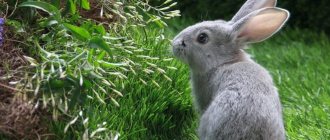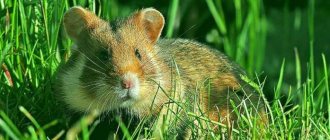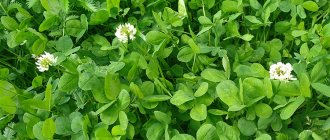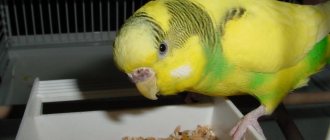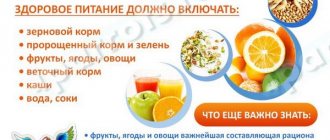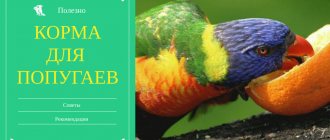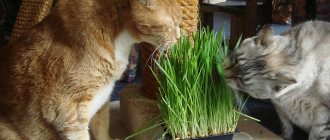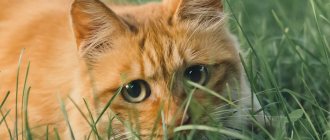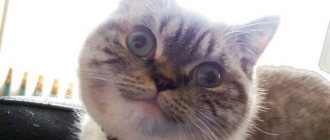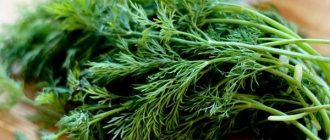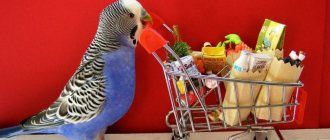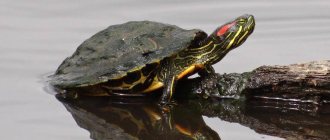Weeds or weeds are the mainstay of the summer menu for my parrots, and I have cockatiels, roselas and grays. Grasses make up more than 50% of a parrot's diet in the summer. And it is the herbs that my parrots eat with pleasure, to their heart’s content, and first of all! ))
Namely: bird knotweed, coltsfoot, dandelion, gooseberry, plantain, sow thistle, fireweed, purslane, nettle, tenacious, quinoa, mustard, lupine, all kinds of wild cereals, St. John's wort, oxalis, thistle, salsify, cinquefoil, damask, clover, timothy, chickweed……..etc….. All this and many other herbs are a green storehouse of vitamins and nutrients for our birds. Let me take a closer look at the beneficial properties of weeds.
Series
Other names for the string: goat's horns, trailer, black-browed swamp, scrofulous grass, dogman, swamp arrow, bident. The string is an annual plant from the Asteraceae family, often found. It can be found on the banks of a stream, river, in a lowland, in a swamp, in a damp meadow. Grows up to one meter in height.
The leaves of the plant are covered with hairs and petioles. The flowers are yellow and grow in baskets. Since ancient times, the series has been used to treat skin and joints. A decoction of the string dries the skin and reduces diaper rash.
The stems, leaves, inflorescences and flowers are edible for parrots, both raw and dried. And they carry the following benefits: – Tannins – Essential oils – Vitamins A and C – Substances that enhance the effect of vitamin C. – Microelements and macroelements (magnesium, boron, zinc, iron, copper) – Bitterness and mucus.
Is it possible to eat?
You can give dill to parrots, but you need to respect the proportions. There are several tips on how to properly feed your pet these greens. Many owners think that dill is prohibited for parrots, however, this is not entirely true. It can negatively affect the bird's body if it is abused. The essential oils contained in it have little harm.
Greens like parsley are rich in nutrients. Despite the fact that it is considered poisonous, its root crop poses a danger to the parrot’s body. The leaves contain large amounts of beta-carotene, B vitamins and vitamin C. It is also an essential source of iron. The amino acids in its composition serve as the building blocks of protein. When consuming parsley, you must monitor the dose to avoid poisoning the bird.
Is it worth feeding the wavy one?
Representatives of the budgerigar species are not prohibited from being given parsley and dill. When feeding greens, it is necessary to observe the bird’s reaction to this product. At first, a small amount should be given to determine the presence or absence of intolerance. A sluggish appearance and inactive movements indicate poisoning by the plant. Otherwise, you can add similar greens to your pet’s main diet.
Why shouldn't you eat cockatiel?
The owner of a cockatiel parrot should not give his pet parsley and dill. Representatives of this species have kidney problems. Their bodies also lack calcium. Parsley negatively affects poultry health due to its oxalic acid content. It is responsible for calcium binding. The essential oils in greens irritate the stomach lining. Parsley's ability to increase sensitivity to sunlight can cause allergies in your pet. You should not include such greens in the diet of parrots that live in open cages or enclosures in direct sunlight. Dried herbs can serve as a substitute. It contains nutrients.
Blooming Sally
It is also angustifolia fireweed. Perennial plant of the Kipreev family. It is found on forest edges, along reservoirs, in meadows, gardens, and orchards. After a fire, this plant is the first to grow in the scorched area, for which it received the second name FIREMAN or FIRE GRASS.
It has a thick creeping rhizome with many shoots and an erect stem up to 1.5 meters high. The leaves of fireweed are lanceolate, long and narrow, pointed at the apex. Large lilac-red, wide-open flowers are collected in an inflorescence, which is a conical raceme 40 cm long.
Ivan tea contains many useful substances: B vitamins, carotenoids, polysaccharides, pectins, phytosterols, organic acids, flavonoids (quercetin, kaempferol), coumarin, tannins, alkaloids.
The above-ground part of the plant contains 6.5 times more vitamin C than lemons. The leaves have a high concentration of iron, manganese, copper, potassium, sodium, boron, calcium, magnesium, and nickel. The rhizomes of willow tea contain a lot of easily digestible proteins and polysaccharides, carbohydrates and organic acids, cobalt salts, phosphorus, and calcium; and there are no tannins in the rhizomes at all.
Keep in mind that fireweed is useful not only for parrots, but also for canaries, finches and other birds. Offer it fresh during the season, and dried in winter and spring. Brew tea for yourself and your birds. Use this tea not only for drinking, but also for bathing birds; it can be combined with other herbs.
Nut mixes
The grain feed contains nuts. Sometimes their concentration exceeds the needs of the bird. It is recommended to partially remove the nuts so as not to harm the liver. Not all types of nuts are suitable for your pet. For example, you should not offer peanuts: they can be affected by mold, which causes dangerous diseases.
It is necessary to discard fruit seeds:
- bird cherry;
- cherries;
- plums;
- apricot
Bitter almonds are not the best food for parrots. Sweet almonds, pistachios, pecans and macadamia nuts will be much more beneficial.
Milk thistle
Milk thistle - this plant is not only a prickly weed, but also a storehouse of vitamins, microelements and biologically active substances for us and our birds! )
Milk thistle is one of the types of thistle, also known as milk thistle, Mary's thistle, thorn thistle, and silver thistle.
Milk thistle grows up to 2 meters in height, the flowers are bright purple, enclosed in a prickly basket.
Milk thistle is generous with trace elements: – Zinc – Selenium – Copper – Magnesium – Potassium – Manganese – Calcium – Iron – Chromium – Aluminum – Boron.
This weed is a source of vitamins: A, E, K, C, plus almost the entire line of B vitamins!
Milk thistle is strong as a protection against chronic bleach poisoning, food poisoning and chronic intoxication. It is also effective against poisoning by one of the most dangerous mushrooms – toadstool.
Milk thistle seeds contain up to 30% valuable vegetable oil. In addition, the seeds contain: proteins, mono- and disaccharides, flavonoids and flavolignans (silibin, silychristin, silydianin, taxifolin, neohydrocarpine, quercetin, etc.), chlorophyll, essential oil (0.08%), resins, mucus, biogenic amines (histamine, tyramine), enzymes, alkaloids, bitters and saponins.
The uniqueness of the composition and medicinal properties of milk thistle seeds is due to the presence of SILYMARIN in them, which has a versatile hepatoprotective effect - mostly due to the choleretic, cholelytic effect and improvement of the kinetics of the gallbladder. Milk thistle seeds are very useful for parrots that are deprived or deprived of sources of tannins in their diet (fresh tree bark, fresh green food).
You can feed parrots all parts of the plant: leaves, stems, flowers, fruits and rhizomes.
But do not forget that you need to start introducing a new plant into the diet with small quantities, because parrots may have individual intolerances and allergic reactions.
Features of collection
Anyone can figure out which plants are appropriate to give to a bird in order to provide its body with useful microelements. But at the same time, certain rules are taken into account, on the basis of which the grass is collected and stored.
These include:
- It is not recommended to pick plants that grow next to the roadway or railway tracks, since here they are heavily polluted and often infected with parasites;
- for collection, it is advisable to choose open clearings in the forest, lawns located in parks, as well as fields or forest strips, since here it is possible to obtain clean, healthy and fresh greenery;
- when choosing grass, you need to carefully examine its leaves, since they must be dense and have an even color;
- Leaves that have any stains should not be picked, and leaves with darkened edges should not be thrown away;
- preference is given to young greens, which have a soft structure, and also do not have too strong a taste, which repels many parrots;
- any herb is introduced gradually, for which the bird is offered a small amount of the plant, and if there is no negative reaction in the form of diarrhea or vomiting, then the dose can be increased daily;
- To create a varied diet, it is recommended to combine different herbs.
Some pet stores grow various plants themselves, which are sold in small plastic containers, and they are affordable, and you don’t have to worry about the grass being infested with parasites.
Quinoa
Quinoa is one of the most resistant weeds to any conditions. Seeds germinate even in polar conditions, and herbicides are sometimes powerless against this constant companion of the garden and dacha. Meet SWAN!
Quinoa (Átriplex) is a genus of dicotyledonous plants of the Amaranthaceae family. Includes more than 250 species. It grows and is found….. but where is it not found?! EVERYWHERE!
And we don’t even know or notice that this weed is a useful ally for the health of our pets! And nevertheless, this plant is not inferior in calorie content to bread, and in protein content - to porcini mushroom. People often consumed quinoa as part of salads. Especially useful for vegetarians as a source of amino acids.
Due to the large amount of proteins contained in young shoots of quinoa, its nutritional value can compete even with products of animal origin.
Benefits of quinoa: – Vitamin E – Vitamin C – Vitamin PP – Potassium – Rutin – Various mineral salts – Vitamin A – Essential oils – 17 amino acids, 10 of which are not synthesized by the body!! – Oxalic acid – Fiber – Alkaloids – Saponins
The beneficial properties of this plant are widely used in folk medicine. It can have a general strengthening effect, assist in the treatment of gout, tumors, hemorrhoids and radiculitis. Well, the anti-inflammatory and antibacterial effect of this plant will bring tangible benefits to both parrots and people!
Be sure to include this weed in your parrots' diet! All parts of the plant can be consumed. Both fresh and dried. Add dried quinoa to porridge and baking flour. Fresh - for salads! Quinoa does not have a specific smell or taste, so in salads it takes on the taste of those vegetables and spices that are mixed with it. So, let's eat quinoa! We boldly say YES to her!
Spreading quinoa Tatarian quinoa
Do you need greens in the wavy's diet?
Wild parrots lead an active lifestyle, so most of the time they search for food. They eat not only seeds, but also plants and fruits. These products are not high in calories, but are rich in beneficial microelements.
In the wild, it is almost impossible to encounter an overweight individual, since such birds will not be able to escape from predators.
Domestic wavy cats lead a sedentary lifestyle. They do not search for food, and also fly little around the apartment or house. Their diet is formed only through the efforts of the owner.
Often people prefer to give the wavy exclusively grains and store-bought food. This leads to excess weight, deterioration of immunity and even vitamin deficiency. To prevent negative consequences for your bird's health, it is recommended to regularly include grass feed in its diet.
Does your parrot like grass?
Not really
Common cuff
Common lady's mantle (Alchemilla vulgaris) is a unique weed in its rich biocomposition and an outwardly familiar weed; has a lot of names: God's tear, breast grass, kalachik, gourd of the heart, sick man and many more nicknames once given by the people to this green doctor.
The cuff grows along the edges of reservoirs and swamps, on the edges of forests in the middle zone. It got its name because of the very beautiful shape of the leaves, reminiscent of a cuff.
In the morning, this unique plant secretes liquid from the microholes of its leaves, which accumulates in the folded leaves. It is often mistaken for dew, but it is not dew. The moisture that the plant releases has a magical effect on the skin, rejuvenating it and preventing aging. It also has a general strengthening effect on the body. This invaluable liquid can be collected in a glass container and taken orally or wiped on the face instead of washing.))
The healing properties are so multifaceted that it is even called “disease”. Since ancient times, infusions have been used for cuts and wounds as a hemostatic and disinfectant, for metabolic disorders, diabetes, colds, diseases of the lungs and bronchi, for rejuvenation, for gastrointestinal diseases, atherosclerosis, tuberculosis and oncology.
The richness of the biochemical composition of this plant is amazing: – Ascorbic acid – Lipids – Fatty acids – Flavonoids – Phytosterols – Tannins – Manganese – Zinc – Iron – Boron – Nickel
When and how much to feed your parrot
One bird needs to be given two teaspoons of dry food daily. Some individuals are voracious and require much more. You need to monitor how much your pets eat, because budgies are prone to obesity. It is recommended to divide the daily dose and then offer it to the bird in parts. The patient should not be allowed to eat more than three spoons of the grain mixture.
Attention! Small birds have an accelerated metabolism. Lack of food can lead to negative consequences, even death. You can purchase an automatic feeder that will provide food in portions.
Wild cereals
So, all wild meadow grasses are edible for parrots! Remember and don't pass by them! Give them fresh now, and dry and freeze them for the winter!
Wild grains are a valuable nutritious product containing protein, carbohydrates, fats and dietary fiber, as well as vitamins and microelements. Watching my parrots, I noticed that when there is a sufficient supply of wild grains on the menu, they completely refuse the rest of the food and devote themselves entirely to eating wild grains. This is especially true for Australian parrot species. Let's try to list them, shall we? I can’t do this alone, so, friends, I’ll start, and you continue! I will be very grateful to you!
In the photo: 1. Barnyard grass 2. Ryegrass 3. Chaff Ryegrass and chaff have many varieties and are very similar to each other.
4. Meadow bluegrass 5. Wild oats (empty oats) 6. Rump 7. Timothy 8. Orchard grass 9. Wheatgrass 10. My first “picture-plate”, with which I once began to climb the meadows in search of useful herbs for my parrots.))
Home germination
At home, you can sprout different herbs, for example, buckwheat, rye and even oats. With the help of such actions, the optimal diet of the wavy is ensured even in winter.
The process is divided into stages:
the seeds are sorted as empty grains are removed;- the seed is soaked for 30 minutes in water;
- shavings or soil are added to the container;
- the seeds are distributed on top in an even and dense layer;
- they are covered with sawdust or soil, and also watered with warm water;
- the container is covered with film;
- the container is moved to a warm place.
Literally after 4 days the first shoots appear, and after another 7 days you can pamper the bird with fresh herbs.
Sow thistle
Thistle is a well-known weed. It is very difficult to exterminate it in the garden, because it carries enormous life potential, and its root system is designed in such a way that even if the entire plant is dug up by the roots, and a fragment of the root remains in the ground, a new strong plant will soon grow from it!
Garden sow thistle (Sónchus oleráceus) or field sow thistle (Sónchus arvénsis) is a perennial plant of the Aster family. Distributed on all continents and in all regions. It can be seen in fields, along reservoirs, along roads, on forest edges, in vegetable gardens. It blooms all summer with yellow flowers, which turn into fluff at the end of flowering.
Leaves, flowers, seeds, stems and roots are edible for humans and birds. When cut, the stem secretes milk, for which thistle is nicknamed milkweed, milkweed, and hare grass.
People have been using this plant in medicine for a long time. It has milk-producing, choleretic, tonic, anti-inflammatory, restorative, vitamin-rich, and hemostatic properties.
Thistle is a magnificent honey plant. Thistle honey is one of the most aromatic and delicious. Sow thistle contains huge amounts of vitamin C and carotene. Also rich in bitterness, fatty oils, and alkaloids. Contains inulin, choline, tartaric acid.
House plants that budgies can eat
Eating indoor plants often becomes the main cause of poisoning and even death of the wavy. This is due to the fact that some flowers are prohibited from being given to parrots, since they contain substances that negatively affect the bird’s health.
Harmless plants include:
- chlorphytum;
- hibiscus;
- aloe;
- balsam;
- arrowroot;
- citrus tree;
- rose;
- toast;
- bamboo;
- dracaena.
These flowers are completely safe for the wavy, if they were not purchased several hours ago, so they can be treated with various chemicals.
Dangerous indoor plants that cause significant harm to the bird’s body include anthurium, monstera, spathiphyllum, philodendron, colocasia, alocasia or syngonium. These flowers have a specific excretory tissue with protective functions. As soon as the parrot approaches these plants, they secrete poisonous juice, causing swelling of the larynx and oral mucosa. The juice, if it gets into the eye, causes conjunctivitis or changes the cornea.
Birds should not touch croton, acalypha, milkweed and jatropha . They contain euphorbine, which causes serious poisoning. It is accompanied by severe burns of the larynx, inflammation of the mucous membrane and disruption of the digestive system.
It is forbidden to allow birds near eucharis, hemanthus, clivia, hipperastrum, brovallia, petunia, allspice, datura, brugmansia or ornamental pepper. Eating such plants causes serious poisoning, so the bird develops nausea, drowsiness, diarrhea and vomiting. Among coniferous plants, the yew tree is dangerous.
Dandelion
The well-known dandelion (Taráxacum) is a perennial herbaceous plant of the Asteraceae family. We all know the appearance of this plant well, so I decided not to dwell on its botanical description.
Distributed everywhere and everywhere. It is a malicious weed, a summer resident’s nightmare!)) After all, one bush of this plant is capable of sowing a field with 1.5 thousand new flowers!
However, this weed is very nutritious and beneficial to both humans and our birds! The most valuable weed!! And now we can easily verify this!)
The vitamin composition of this weed is amazing!! – Vitamin A (dandelion flowers are more concentrated in vitamin A than carrots) – Vitamin C – Vitamin E – Vitamin PP – Almost the entire line of B vitamins
A powerful source of microelements: – Calcium!!! (Calcium in the green part of the plant is in a successful combination with iron, phosphorus and magnesium, so dandelion calcium is absorbed most effectively and easily!) – Iron – Phosphorus – Magnesium – Manganese – Potassium – Cobalt – Boron – Copper.
Dandelion also contains protein, polysaccharides, dietary fiber, essential oils, tannins, organic acids (oleic, linoleic, lemon balm, cerotinic, linolenic, palmitic and others.)
Dandelion is a powerful antioxidant! It is healthy and should be eaten by both birds and their owners!)) Dandelion has long been called the “yellow doctor”, as it contains a valuable supply of the most useful substances!
All parts of the dandelion are important in a parrot's diet: root, stem, leaves, flowers and seeds!
But this is not allowed!
The list of prohibited herbs is much more modest. First of all, these are spicy herbs such as cilantro, basil, etc. And then the list will look like this:
- St. John's wort,
- onion,
- buttercup,
- tansy,
- sagebrush,
- yarrow,
- horsetail,
- celandine,
- sorrel.
These wild herbs may contain alkaloids or nitrates, which does not contribute to the health of winged pets.
It is easy to make the “green menu” of parrots healthy and varied by changing the “dishes” every day, alternating different types of herbs. Regarding dill, parsley and spinach, owners of ornamental birds can be advised to use these herbs for complementary feeding purely at their own discretion, because there are enough other useful plants.
dead nettle
Next up we have another very tasty and healthy weed that looks like nettles. Hence the second name - dead nettle. Only jasmine, unlike nettle, does not have a stinging effect.
White lily (Lamium album) belongs to the Lamiaceae family. This perennial herbaceous plant reaches up to one and a half meters in height and has a succulent, hollow, tetrahedral stem. Dead nettle blooms from May to September. And the seeds ripen from August to October.
Claryweed is very widespread. It grows in gardens and parks, in vacant lots and along fences and paths.
Benefits of claspberry: White clasp flowers contain a large amount of mucus, tannins, saponins, essential oil, alkaloids (traces), ascorbic acid, flavonoids (isoquercitrin, 3-glycoside-kaempferol, choline, histamine, tyramine), vitamin C. In addition to the leaves Of these substances, carotene was found - up to 15 mg%, and a glycoside was found in the roots.
People use jasmine both in folk medicine and in cooking. Yes! Add fresh damask leaves to fresh vegetable salads!! It tastes like spinach, and in terms of the amount of valuable substances - like nettle. The most priceless and delicious weed!!
This useful weed can be fed to parrots both fresh and dried. To prepare dried jasmine for the winter, leaves and flowers are collected during flowering, and rhizomes - at any time.
All parts of the plant are suitable for parrots to eat: stems, leaves, flowers, seeds and rhizomes.
Is it possible to give millet to a parrot?
Most of the parrots' daily diet is grain mixture. The main component in it is millet - up to 60% of the mixture. Since millet is a processed millet, it can also be given to parrots. However, birds should not be fed just one type of grain; The grain mixture should include 4-5 types of cereals, and the share of millet cereals among them should not exceed 50-60%. During processing, millet loses some of its beneficial properties, so it is not recommended to completely replace millet with it. However, feeding your parrot millet is beneficial. Due to its high calorie content, this cereal is excellent for feeding sick and weakened birds. It normalizes digestive function and improves the condition of the feathers. High protein content has a good effect on the development of chicks. However, an excess of this food in the diet can cause obesity.
Shepherd's Purse
This plant is also known as girchak, field buckwheat, heart grass, sparrow grass, milkweed and shepherd's grass (Capsella búrsa-pastóris) - an annual herb that belongs to the Brassicaceae family.
The shepherd's purse usually reaches a height of 20-60 cm. The stem of the plant is single and erect with small narrow leaves. The flowers of the plant are white, arranged in elongated racemes. Shepherd's purse blooms from May to September. The fruits (heart-shaped pods) also begin to ripen in May. Distributed throughout Russia and grows along fields, roads, in fields, orchards and vegetable gardens.
Benefits of shepherd's purse: - resinous substances, - essential oils, - acetylcholine, choline, - tannins, - calcium and potassium salts, - organic acids: malic, fumaric, citric, tartaric; – saponins, – flavonoids, – vitamins: K and C, riboflavin, thiamine, carotene!
Give this weed to parrots as fresh grass food. Use stems, roots, leaves, flowers and seeds for food. It is advisable to serve in the form of a fairly large bouquet, hanging in a cage or on a stand using a tie or jute rope.
And by preparing a shepherd's purse for the winter, you will give your birds a big and tasty surprise in winter. For drying, collect the plant during the flowering period: May - September.
How to give it to a bird
It is advisable to give green food to the wavy from childhood. Young birds are happy to try new foods, but become more and more picky as they age. Each pet has its own preferences, so even the most useful grass may not cause much delight in the wavy, so you will have to limit yourself to other plants.
If for various reasons a parrot refuses to even try grass food, then you can change its shape, size and even texture . Large leaves often arouse the curiosity of a small bird. Sometimes parrots prefer dried grass, which smells pleasant and also rustles unusually. If the birds are kept in pairs, then one wavy can teach the other to eat grass.
Many owners grow plants on their own in their garden or dacha, which allows them to provide their pet with fresh, clean and healthy grass all year round.
Chickweed
Chickweed (Stellaria media); also known by the names: woodlice, canary grass, woodlice, hernia grass, heart grass, woodlice. Shade-tolerant plant.
It grows near homes, in vegetable gardens, weedy places, and sometimes along damp forest roads and clearings. In gardens it is a malicious weed, which is difficult to control due to the large number of seeds. The plant got its name because it is almost always wet and moist to the touch, even in dry weather or in the sun.
Benefits of woodlice: - chlorophyll, - essential oils, - wax, - tannins, - saponins, - lipids, organic acids, - magnesium, copper, iron, - carotene, vitamins C, E, K and much more.
Woodlice has antiseptic and anti-inflammatory properties.
The carotene included in the composition is necessary for the normal functioning of the visual organs. The plant is a sedative and helps cope with stress. Relieves the condition of poisoning and helps normalize kidney function.
Vitamin K, which is present in the composition, takes part in the process of hematopoiesis and increases blood clotting.
Vitamin C: firstly, helps strengthen the immune system, secondly, it has a positive effect on blood vessels, making their walls more elastic, and protects against atherosclerosis. The plant helps cleanse the liver. For anemia, remedies based on this plant will also be useful, because it contains iron.
Woodlice is a natural hydromedical center; it has an amazing property - it predicts the weather! This plant is very sensitive to fluctuations in temperature and humidity. If the corolla of the flower has not risen and opened before 9 o’clock in the morning, then it will rain during the day. And after the rain, the plant becomes as if crystalline thanks to the stems overflowing with water, shining in the sun. This is probably where its popular name comes from - woodlice.
This wonderful grass grows from early spring to late autumn. Even in winter you can get fresh woodlice from under the snow. Be sure to include woodlice in your birds' diet!
Collect or buy?
If there is a square or lawn with clean plants near your home, it is easier and better to collect them in small portions every day. This will ensure the freshness of the product and its variety. This option is suitable for spring and summer.
Less attractive is buying a set of greens at a pet store. The herbs do not arrive there freshly picked. It is also unknown in what place they were collected, or for how long ago.
To provide birds with vitamin greens in winter, it is recommended to grow them at home, in flower pots. This is done with buckwheat, oats, wheat, rye, and barley.
Purslane
Purslane (Portulaca Oleracea) is native to India and Persia, but has now spread throughout the world. It used to be treated as a weed, but recently it has been cultivated and eaten. This weed with fleshy leaves and yellow flowers has many beneficial properties and unique nutritional value. Purslane seeds may not lose their viability after lying in the ground for up to 40 years. It grows both in a well-kept garden and in arid climates.
Purslane contains more Omega-3 fatty acids than many fish oils! This weed also has one of the highest levels of vitamin A of any leafy green plant (1320 IU/100 g, providing 44% DV). The high vitamin content helps the body fight against the formation of cancer cells and maintains eye health.
In addition, purslane is a powerful antioxidant and perfectly supports the immune system and overall health. It contains two different types of betalain alkaloid pigments: red beta cyanide and yellow beta xanthines, which are potent antioxidants and mutagens. In addition, purslane contains vitamins C and B-complex, including riboflavin, pyridoxine, niacin, as well as carotenoids, trace elements (iron, magnesium and calcium).
By introducing this plant (both fresh and dry) into your parrot's diet, we will help him stay healthy and cheerful.
How to store
Grass brought from the street should be rinsed well with water, but without soaking, otherwise the plants will lose their beneficial properties.
Picked greens are stored in the refrigerator for no more than 5 days. To do this, it is advisable to use special plastic containers intended for food products. It is recommended to wrap bunches of greenery in paper towels and periodically spray them with water to prevent drying.
If the weed is dried, it can be stored on a windowsill or on a cabinet shelf.
knotweed
He is also bird's knotweed, dog's pepper, woman's bitterling, bird's buckwheat, murava, goose grass.
It is a low-growing annual plant with small leaves and white, green or pink flowers. The plant either spreads along the ground or grows straight up.
Knotweed is the scourge of gardeners and summer residents, since it is very difficult to remove from the site. It is resistant to destruction by herbicides and resistant to trampling.
This grass is used as a food plant for birds. But people also take it for food: they bake pies with knotweed, add it to salads and dressings. And from its roots a blue dye is obtained.
And here are the beneficial substances of bird knotweed: – Vitamin E – Vitamin K – Vitamin C – Fiber – Resins – Pectin – Ash – Calcium – Phosphorus – Silicon – Manganese – Iron – Zinc – Wax – Essential oils – Tannins – Flavonoids – Glycosides – Sugars – Silicic acid – Easily digestible carotene – Several types of coumarins. – Phenocarboxylic acids.
Simple wire cutters
The most primitive device is very similar to ordinary scissors. Only one of its cutting surfaces is equipped with a small notch with a sharp edge. Using such a device is easy, provided you have some skill and experience. For young dogs, nail trimming is always stressful. They do not want to sit quietly, they strive to tear the paw out of the owner’s hands and in every possible way complicate the process. So Litbro.ru will not recommend such a gadget to novice dog breeders. The risk of causing serious physical injury to your pet is too great. Well, for experienced owners who have used similar tools more than once, nothing better can be desired. Cheap and very effective.
Cost – 35 – 72 rubles.
More advanced versions of hand cutters offer expanded functionality.
Although their main part, in the old fashioned way, is based on two cutting surfaces. Service additions imply only human convenience. Models with rounded ends, a container for cut claws and lighting have proven themselves very well. The fact is that some dogs have the habit of looking for clipped ends on the floor and eating them. Sharp, bent cuttings can damage the stomach wall and cause bleeding. A small “waste collection” effectively solves this problem.
Price – 636 rub.
Another gadget from the line of simple nippers has comfortable ergonomic handles that allow you to securely hold the tool while trimming nails.
This is important when the animal gets nervous and breaks out.
We pay attention to one more detail - the expansion spring. It fixes the cutting surfaces in the open state, which makes the operation somewhat easier.
Otherwise, the functions of the device duplicate all the features of its predecessors. To properly shorten claws, you must have the skill and achieve unquestioning obedience from your dog or cat.
Cost – 229.93 rubles.
Don't forget to maintain hygiene!
Important! Properly selected sand will additionally have an antibacterial effect and help prevent the growth and development of bacteria and parasites on the bird’s body.
By adhering to the basic recommendations of this leaflet, you can easily create a complete, balanced menu for your budgie. And your feathered pet will delight you with its excellent health, good health and cheerful mood!
Source
What to do if you eat it?
To determine if a parrot is poisoned by parsley or dill, you need to pay attention to external signs. The pet becomes lethargic and begins to refuse food. The bird's feathers are ruffled, its wings are lowered and tightly closed. As a treatment, a special drug is used - an adsorbent. It is administered using a medical syringe or pipette. If there is no appetite for 5-6 hours, the bird may faint from hunger, which will lead to death. To avoid this, you need to feed the bird liquid porridge in small portions.
Additional feed
Important! Seed sprouts are rich not only in vitamins, but also in valuable enzymes and antioxidants, which are no less important for the good health of the parrot.
The need for easily digestible protein will be filled with special egg food. By adding it to the diet, you will notice a significant improvement in the condition of your pet's skin and feathers. Egg whites also help maintain muscle tone.
Egg food should be included in the diet of the wavy during the periods of molting and nesting. Birds weakened by illness will recover faster if more protein is also added to their daily diet.
Fruit and vegetable supplements
Poultry must be on the menu. It will be useful to include in your pet’s diet:
Why does a parrot need oats?
As I already said, sprouted grains have a number of medicinal benefits for poultry health. The seeds contain all the necessary nutrients, B vitamins, macro- and microelements. They are preserved during germination and take on a more concentrated form.
Daily consumption of oat pards will strengthen your pet’s immunity and increase the body’s protective functions. Eating fruits is of great importance for the prevention of infectious and colds. It is necessary to improve the functioning of the gastrointestinal tract.
The sprouted plant contains no harmful components. The sprouts form ingredients that protect the bird's body and prevent the development of diseases.
Treats
Every loving owner will not refuse to pamper their pet with a nutritious treat. This is how the wavy feels that you love him and care about him.
Important! Such treats can be offered to the bird as a reward or as an element of the game - this will help make the friendship with your pet even stronger!
